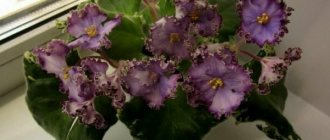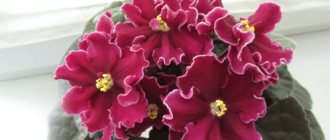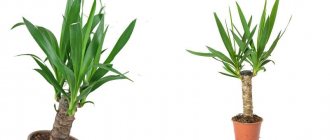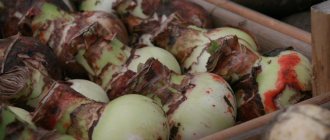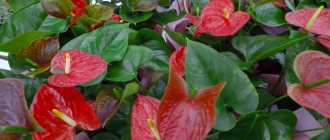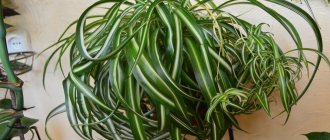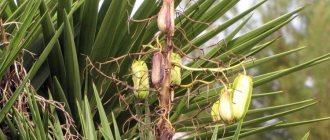Description of the variety
Violet Blue-Eyed Russia has a standard socket. It has large double and semi-double flowers of a delicate blue color with elongated, slightly wavy petals. The edges of the petals are outlined with a purple edging. In the center there is a beautiful rich blue shading, and the edge has a strawberry frame - a border with a splash.
The rosette is green, exhibition. The leaves are pointed and grow slowly. The bushes are perfectly formed, they turn out beautiful, even, and compact. The size of the rosette depends on the size of the pot.
Violet Blue-Eyed Russia is a repeated winner of domestic exhibitions. The color and shape of the flowers is simply unique. The purple edging and expressive shades add elegance to the variety. Flowering under a lamp and under natural light is almost the same. However, in natural light the flowers are brighter and the flower stalks last longer in the bouquet.
Reviews from flower growers
Nadezhda Yurkova. I first saw the Blue-Eyed Russia violet variety at an exhibition in Moscow at the All-Russian Exhibition Center. I really liked it right away because I adore blue flowers. I bought a young rosette and have never regretted it. The variety has been with me for many years and never ceases to please me with its abundant flowering.
Svetlana Stogova. The Blue Russia variety is ideal for those who love varieties with blue flowers. It is not for nothing that he is a repeated winner of domestic and foreign exhibitions. Caps of large double flowers look very impressive. A minor drawback is that the purple edging of the flowers does not always show through.
In this video, the florist shows a violet of the Blue-Eyed Russia variety and talks about it.
Bloom
Violet Blue-Eyed Russia blooms with beautiful double and semi-double stars of a bright blue hue. Flower size is 6-7 cm. Flowering is long-lasting, each lasts up to five weeks. In the heat, the size of the flowers decreases and the color becomes paler. The variety is stunning with an abundance of flowers and a huge number of buds. The flowers are holding up well. The cap of this variety, bred by Elena Korshunova, has a regular shape and retains its grace for a long time. Her flowers do not fade for a long time, maintaining their color. However, during the flowering process the border fades a little.
In order for the EK Blue-Eyed Russia violet to show itself in all its beauty, it is necessary to prepare and select the right substrate and provide coolness. In such conditions, it will show its color and a border will appear.
This variety is hardy and unpretentious. She is easy to care for. The variety lends itself well to propagation. It blooms in the tenth month from planting the leaf.
Violet RM-Charlotte
The variety appeared in the field of view of gardeners in 2016. We will see a photo and description of the RM-Charlotte variety below.
The Charlotte violet appeared in 2016.
Description of decorative features
The varietal violet in the adult state is distinguished by sufficient spatial and volumetric symmetry with a good density of filling with leaves - its rosettes, under the right conditions of maintenance, are formed by bushes of a compact configuration. According to the average figures of the overall dimensions of its volumetric mass, the violet represents a section of the standard subspecies.
At the beginning of the phase of completing the silhouette of the bush, the violet behaves absolutely independently, distributing only slightly pecked young leaves according to the number of floors - tiers - planned by the varietal characteristics, sufficient to ensure the decorative attractiveness of the rosette.
Saintpaulia extremely carefully places all the leaf plates in their places . Thanks to this, the bush, as in architectural practice, forms a magnificent pattern of mosaic alternation of leaves.
After the process of rosette formation is completed, each section of it can:
- To be illuminated by the rays of a star to a relatively equal extent;
- And receive the optimal charge of solar energy.
The leaves of the medium-sized variety have :
- Wide oval shape with soft and uniform curves along the entire length of the contour;
- Surface with quilted texture;
- Completely filled with a mass of the finest fibers;
- Remarkably pressed venation pattern, distinguished by the light green shade of the graphics;
- And not only the central, but also the lateral veins are significantly thick.
The leaf blades are painted in the green tone of lush summer foliage . Along the edges of the leaves there are very small, rounded and clearly cut teeth.
INTERESTING! The leaf plates themselves have a completely uneven format - their lateral contours in a varied sequence bend down towards the flowerpot, creating a slightly larger volume of the violet bush. This feature of the leaves does not harm the decorative attractiveness of the variety.
Violet leaves are the color of summer green.
Flowering in violets occurs extremely luxuriantly and over long periods of time , at the very first budding reaching almost the greatest fullness of disclosure of the varietal volume and brightness of the color of the corollas.
The variety begins flowering with single buds or small caps, which gradually gain in size as the violet matures :
- Maximum strength;
- And pomp.
The typology of flower format classifies them as a “star” subspecies.
Violet corollas are different:
- Terry degree of filling with petals;
- And quite large in size.
The side contours of each petal are decorated with:
- Wave-like curves;
- And a finely textured fringe, which is also responsible for the function of an even greater voluminous increase in flowers.
The main varietal feature of violets is the spectacular coloring of its corollas . It consists of:
- Playing shades of pink of different color intensities;
- And a finely speckled fantasy spray of fuchsia tones, sprinkled over the entire surface of the petals.
The edges of the petals are decorated in the form of a snow-white braid , which, due to the fringed structure of the edge, resembles exquisite lace.
NOTABLE! The width of the white ribbon varies at all levels of the corolla: thickened on the lower petals, it becomes thinner as it moves towards the center and may be completely absent on the innermost petals.
Saintpaulia grows large flowers.
Sports
retains its varietal characteristics quite , but occasionally blooms with a sport that is distinguished by the degeneration of the speckled fantasy coating into intense spots and strokes of darker, almost burgundy shades.
IMPORTANT! The leaf blades of sports specimens also change color and are characterized by a dark color.
The violet in question sometimes has sports.
Course of life stages
Varietal violet is characterized by relatively easy behavior in terms of response to measures of agricultural care and maintenance - it is absolutely satisfied with the use of classical regimes and methods.
Specificity of development in indoor collections
The Saintpaulia variety is different:
- Unpretentiousness;
- Developing at a rapid pace;
- The flowering period reaches within the time limits determined by standard characteristics.
Varietal violets can bloom for a long time, delighting flower growers:
- The pomp of the hats;
- Unusual colors;
- And preserving the decorative effect of flowers until they age completely.
Some other positive touches of the violet image include:
- Independence in the process of bush formation;
- Enchanting splendor of fantasy decorative flowers;
- Attempts to form flower caps from the first wave of budding;
- Large texture of the corollas.
The variety has practically no obvious disadvantages . Minor nuances include some waviness of the leaves, which does not disturb the overall impression of the decorative violet.
ATTENTION! One can also note the fading of the color splendor in the hot microclimate of the collections, but this shortcoming is easily corrected by adjusting the care regimes.
Features of reproduction
Only vegetative propagation is available:
- Leaf babies;
- Or stepchildren.
Feedback on warmth in flowers
When keeping a plant in a home microclimate, heat can cause the color to fade - the intensity of the fantasy color scheme on the petals and the volume of the fantasy pattern increases, and the white edge can almost completely disappear.
In order to preserve all the varietal characteristics of the violet, it is best to move it to somewhat cool conditions .
CAREFULLY! Flowers and buds of the variety fall off when exposed to sudden heat changes and drafts!
Pedicel strength
Violet forms dense and strong peduncles of optimal length , capable of constantly supporting heavy corollas in a straight position.
Flowering type
The varietal violet immediately tries to bloom in a cap type, but it achieves the varietal characteristics of the volume and splendor of the caps gradually, with an increase in the number of flowering waves.
Flower lifespan
Violet corollas remain viable for up to a month .
The presented variety blooms for about a month.
Reviews
Antonina Mikhailovna. “ The blooming of the RM-Charlotte violet gives me purely aesthetic pleasure - its rather large corollas are similar to the exquisite flowers of Chinese roses, but differ from them in the beautiful shades of pink carnations. And the motley fantasy of specks all over the petals and marvelous white lace along the contour of the flowers are the final chord of this splendor. In addition to the decorative nature of the violet, it is not capricious.”
Light
According to the description, the Blue-Eyed Russia violet needs plenty of lighting, but without direct sunlight. South windows are not suitable for the plant. If there is no other placement option, then shade the violet. It is best to place the plant on east and west windows.
In winter, it is recommended to remove violets from cold glass to prevent hypothermia of the roots.
If the plant is not placed on a windowsill, then it must be illuminated. With a lack of light, the violet stretches upward, the color of the leaves is lost, they become soft, and the development of the rosette is disrupted.
In order for the plant to develop correctly, it is provided with 14-16 hours of daylight.
Violet Blue Blood
The Blue Blood violet, obtained thanks to the breeding work of E. Korshunova, belongs to the Saintpaulias of standard size. The rosette of this variety that amazes the viewer consists of simple rounded leaves of rich green color.
The flowers, like many other varieties of Korshunova’s selection, are very large. Their obvious advantage is the semi-double corolla, wavy along the edge, and the unusual blue tint of the background color. The petals are edged with a thin white border.
Air humidity
To successfully grow violets, you need to monitor air humidity. In their homeland, plants grow in conditions of high humidity. If the air in the room is too dry, then moisten it by installing trays with water, or install an air humidifier next to the violets.
Traditional foliar spraying is not suitable for violets. The droplets do not evaporate, but roll down the leaves to the center of the rosette. As a result, she becomes infected with a fungus.
Features of feeding
Regular fertilization is required for violets from spring to autumn. In winter, the plant is dormant, so you should not overload it with excess minerals.
[adsp-pro-5]
For full development, the plant requires nitrogen - for growing foliage, phosphorus and potassium - for the formation of buds and flowering. Nitrogen fertilizers are actively used for young plants, phosphorus-potassium fertilizers for adults. The composition of fertilizers also depends on the phase of plant development: the violet should receive nitrogen at the beginning of the formation of the rosette, phosphorus-potassium - during the formation of buds and flowering.
Important. Excessive feeding of violets over the age of 3 years leads to a lack of flowering.
Watering
The most common cause of violet death is improper watering. These plants do not tolerate drying out or waterlogging of the soil. It is considered optimal to water violets twice a week in the warm season, and once a week in the cold season.
For irrigation, use settled water at room temperature. You can water at the root, making sure that water does not get on the leaves. You can use watering from a tray, wick or drip methods, as well as water the plant by immersion.
Violets love to swim. After this procedure, they should be dried thoroughly, allowing the water to drain completely.
Violet Irish flirt
The star-shaped, double flowers of the Irish flirt violet, bred by S. Sorano, are miniature roses of an unusual white-green color. The edges of the petals on the corollas are densely corrugated, which only complements the similarity of Saintpaulia to a noble garden flower. The green tint becomes thicker towards the edge of the petals, forming a decorative wavy frill.
The variety belongs to a miniature variety of violets. Flowering in the form of a cap, abundant. The flowers do not scatter and retain the appearance of a small, neat bouquet.
Pot
For any plant it is necessary to choose the right pot. And violet is no exception in this regard. These plants are capricious. If the diameter of the pot is not selected correctly, the flower will not be able to develop or bloom normally.
Violets have a small root system and do not need much space. The pot should be three times smaller than the rosette. You cannot use the pot “for growth”, as in this case it may rot. If you use a pot that is too large, the plant will not bloom until its roots have covered the entire soil.
You can use hanging flower pots, as well as ordinary ones, with a diameter of 8-12 cm. Violets feel comfortable in such pots.
Care techniques in indoor culture
Both violets are distinguished by their unpretentious characters - their bushes develop well and bloom gracefully in voluminous waves in response to the careful and regular implementation of simple agricultural practices:
- Plants should be placed on a window facing west or east; specimens from windows to the north should be provided with additional rays with a diffuse spectrum, to the south - unobtrusive artificial protection is required;
- to water violets in small doses from the moment when the top drying of the substrate is visually clearly visible;
- It is best to apply additional fertilizing with mineral fertilizers
- Provide light to varieties primarily from daylight, long-lasting, with a spectrum of scattered rays;
- Control a constant heat level within +20 + 24°C ; eliminate sudden fluctuations in the temperature gradient;
- Plant rosettes in nutritious, permeable soil with good aeration; ensure the creation of a sufficiently reliable drainage layer;
- At the time of transplantation , use a gentle transfer more often, unless there are special indications.
Reproduction
The simplest and most convenient method of propagation is cuttings. The resulting cutting can be planted immediately in the ground, without waiting for roots to appear. With this method, the plant is buried 1-2 cm into the soil at an angle of 45 degrees. To create optimal germination conditions, the container with the planting is placed in a greenhouse.
You can root the cuttings in water. To do this, place the leaf in clean water; be sure to add an activated carbon tablet to prevent rotting. The handle should not touch the bottom of the walls and bottom of the vessel. After 2-3 weeks, roots will appear and the cuttings are transplanted into the ground. During this procedure, it is important not to damage the delicate roots. When planting, you cannot bury the cuttings, otherwise you will have to wait a long time for the babies to appear. It is optimal to plant at a depth of 1-2 cm.
Pros and cons of wick irrigation
Many violet collectors keep their plants on wicks, but why is this method so popular? I propose this topic for discussion.
There are many pros and cons of wick irrigation. For many violet lovers, switching to this watering option causes mistrust and fear of losing their favorites. How can the disadvantages of wick irrigation be converted into advantages? We ask collectors who use wick watering to share their experience, and also answer questions about whether this is true:
1. In violets, the diameter of the plant increases due to the lengthening of the leaf cuttings and the rosettes quickly age
2. The diameter of the flower decreases in relation to the diameter of the rosette, that is, the flowers become smaller
3. Leaves become more fragile and brittle, making them more difficult to transport and replant.
4. Some varieties of violets do not accept wick watering
5. They bloom quickly; with regular watering, the flowers last longer
6. The soil on the wick becomes salty very quickly.
7. Possibly excessive waterlogging, and as a result - rotting of the socket
8. The height of the plant increases due to the water container, which leads to the need to increase the height of the shelf. When switching to wick irrigation, you have to increase the distance between shelves on the rack, sometimes with the loss of one shelf because of this.
9. Save time on watering
10. You can leave plants unattended for a while and not worry about the soil drying out.
11. Because the wick watering solution contains fertilizers, the plant constantly receives the necessary substances
12. Most plants adapt well to wick watering; you cannot overdry or “flood” the violet
13. Plant growth accelerates. The baby turns into a starter faster and blooms faster
14. The plant blooms more often
15. Air humidity increases, and this is especially good when the heating is on
16. Wick watering limits each plant. With this type of irrigation, the nematode cannot walk along a single wet tray, which is a huge advantage of wick irrigation.
17. The size of the outlet can be limited by significantly reducing the pots.
18. It is recommended that sometimes the vessel with water is empty and the wick dries out a little.
19. You need a small pot, less than 1/3 of the diameter of the outlet, since the nutrition comes from the solution and not from the substrate, you get a decent saving on soil.
20. They use different materials for the wick: synthetic linen cords of various thicknesses or cut-up tights. From experience: which is better?
21. When replanting, it turned out that people put the cords in the pot differently: some put them in a ring on top of the drainage, while others simply pull them along the wall of the pot almost to the very top. If there are any fundamental points in this?
22. Peduncles become somewhat collapsed, do not stand strictly “up”, because of this there is not a “cap”, but some “disintegration”.
23. At the moment, pots for wick watering have not been developed, so the appearance of a plant with a container for wick watering leaves much to be desired
24. Is oxalic acid used for wick irrigation? If so, how does it combine with fertilizers dissolved in water?
25. Before turning off the heating in the spring, violets must be removed from the wick, otherwise they will die from temperature changes
26. Mini-violets, which are grown in very small pots, can dry out literally within a day with normal watering, so wick watering is very convenient when growing them
27. The mixture should be soilless, then there is less risk of infection by any living creatures
28. It is not the length of the wick itself that is important, but the distance from the water to the pot. This “air” section of the wick is a kind of “engine” of the entire system: when it dries out (and therefore the soil in the pot dries out), water, according to the law of capillaries, is pulled up into the pot. If you make this distance too large, the wick will dry out due to the long length, and not because the soil has already dried out...
29. Often a green coating appears on the walls of the container with the solution - this is algae. There is nothing wrong with them, since they do not affect the vital activity of violets. The only negative is aesthetic perception.
30. There is no place for sphagnum in the mixture for wick irrigation, since sphagnum strongly draws water onto itself, which leads to rotting of the roots.
31.No drainage is required for wick irrigation.
32. When transplanting violets using wick watering, you must not wash off the old soil (!), this can lead to rotting of the roots
I really want to have healthy and beautiful plants and not make basic mistakes when transferring them to the wick.
Diseases, pests
Caring for any violet flowers at home comes down to proper watering and timely replanting. If the rules of care are violated, the violets get sick. They are affected by infections, fungal diseases, and pests appear. Most often, violets are affected by gray rot, powdery mildew, and fusarium. Burns may occur on the leaves. Often plants are affected by insects: aphids, nematodes, thrips, mites.
If the plant is sick or has been attacked by a pest, it should be treated immediately with chemicals, following the instructions.
Transfer rules
The violet must be replanted every year to renew the soil and monitor the condition of the root system. The recommended time for transplantation is the beginning of spring, when the sun is bright, but not hot, like in summer.
It is allowed to transplant the rosette in the fall, after flowering, in late October early November. In summer, it is better to refrain from replanting, since the violet will take a long time to take root on hot days.
If the plant is affected by disease or pests, it is necessary to carry out an unscheduled transplant, regardless of the time of year and conditions. When the procedure has to be carried out during flowering, all flower stalks from the rosette must be cut off.
Violet Passion is replanted every year, and the condition of the roots is checked during the process.
For transplantation, select a small pot, maximum 13 centimeters. Preference should be given to plastic containers, which retain moisture longer. Cleanliness of the pot is an important condition for success. When using old containers, they must be thoroughly cleaned and treated with disinfectant solutions.
The substrate for transplantation is selected loose, consisting of the following components:
- Soil, leaf and turf in a ratio of 3:1 - 5 parts.
- High-moor peat – 3 parts.
- River sand – 1 part.
- Perlite or vermiculite - 10% of the total volume of the mixture.
During transplantation, the rosette is removed from the old pot, the rotten lower leaves are torn off, and rotten and too long roots are removed. A new pot is filled to a third of its height with a drainage layer (expanded clay, pebbles, fine gravel mixed with crushed sphagnum moss). A rosette is installed on the drainage and the roots are sprinkled with the prepared substrate to the level of the lower leaves, but without sprinkling their cuttings.
Important. You cannot water the violet immediately after placing it in the soil. To preserve moisture, the outlet is covered with a plastic bag. After a day, the cover is removed and the violet is watered.

